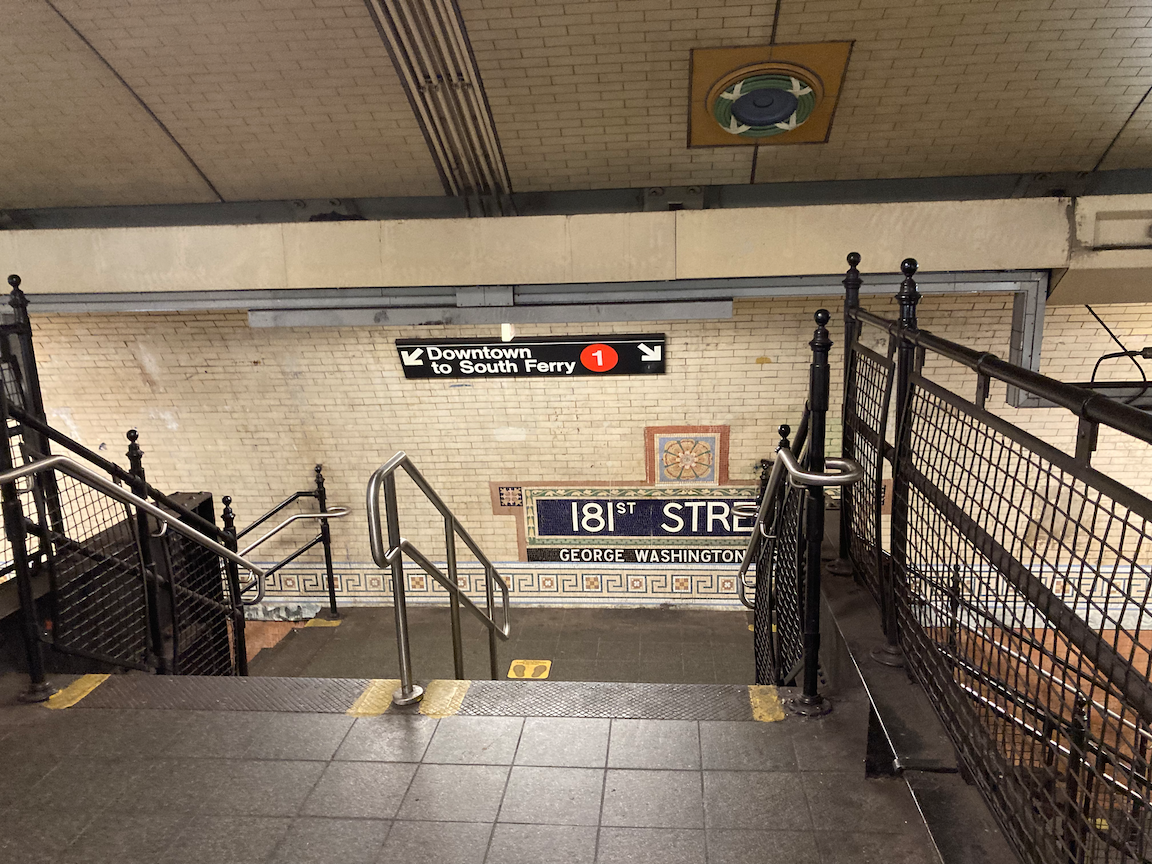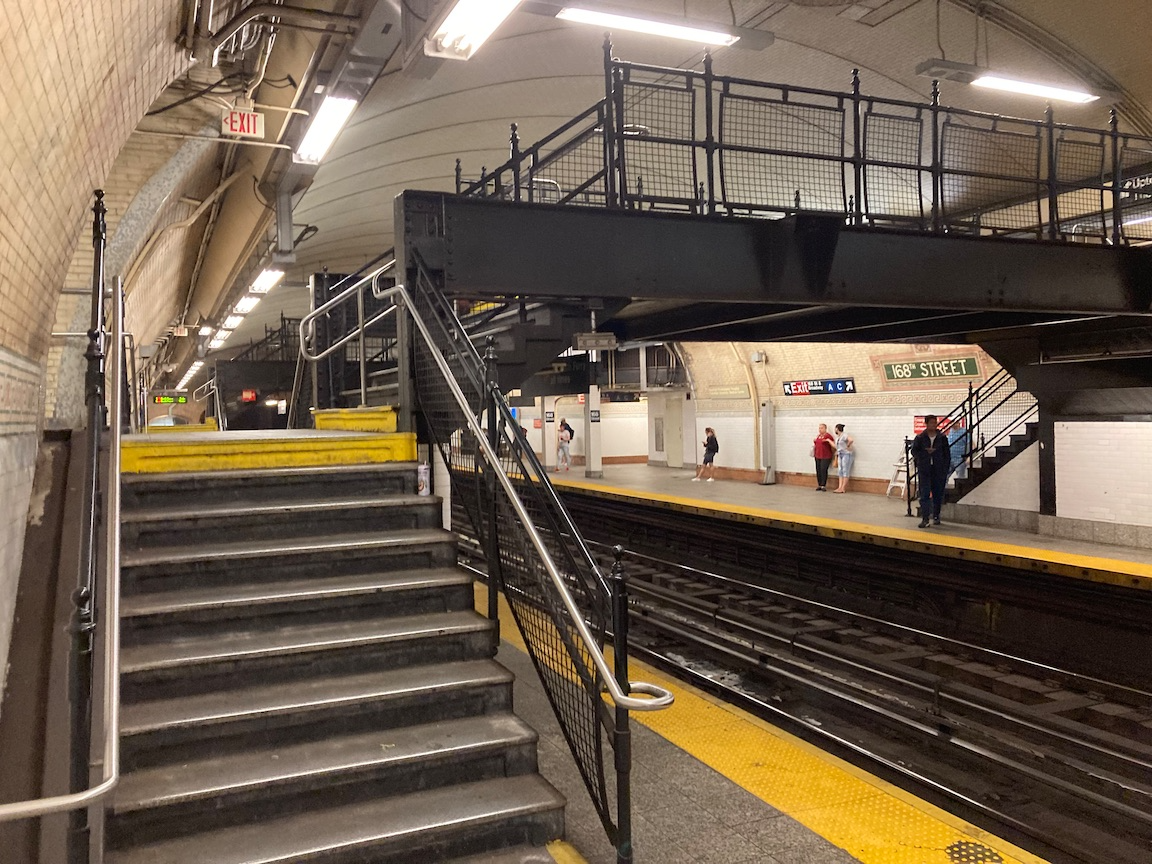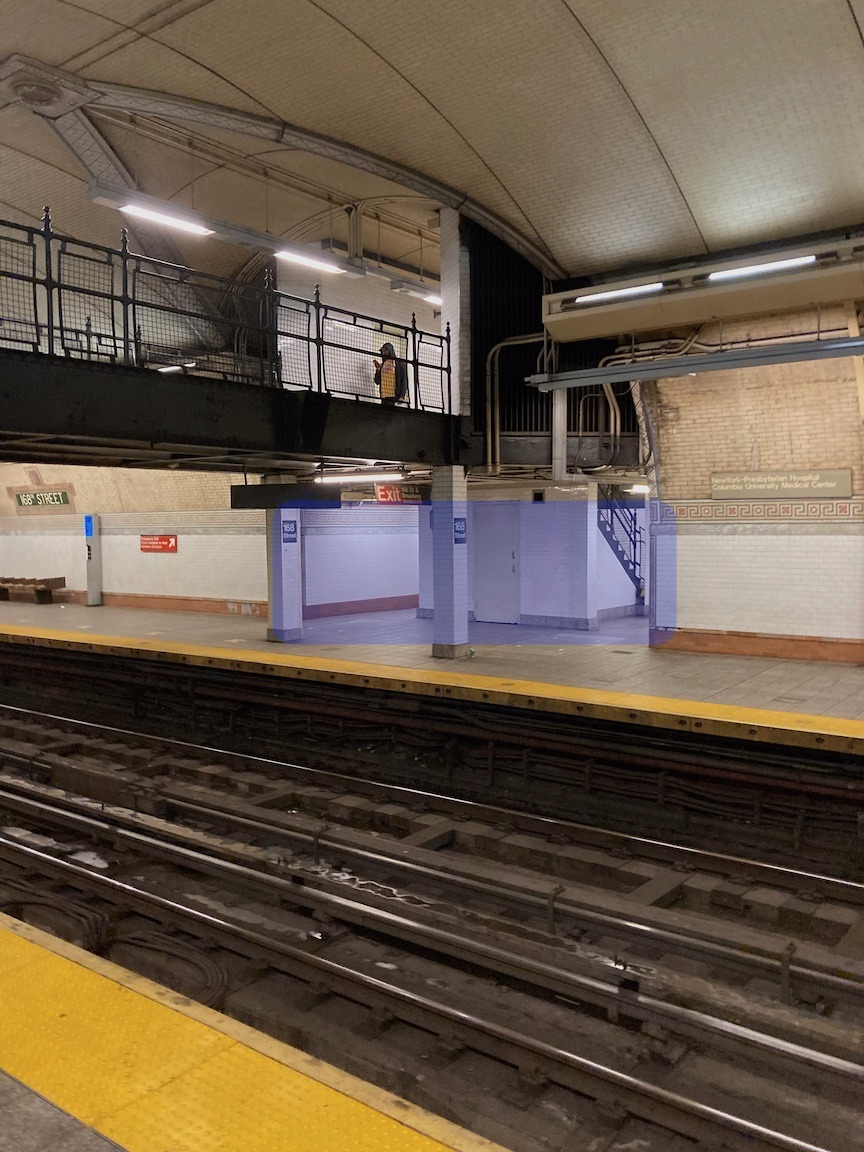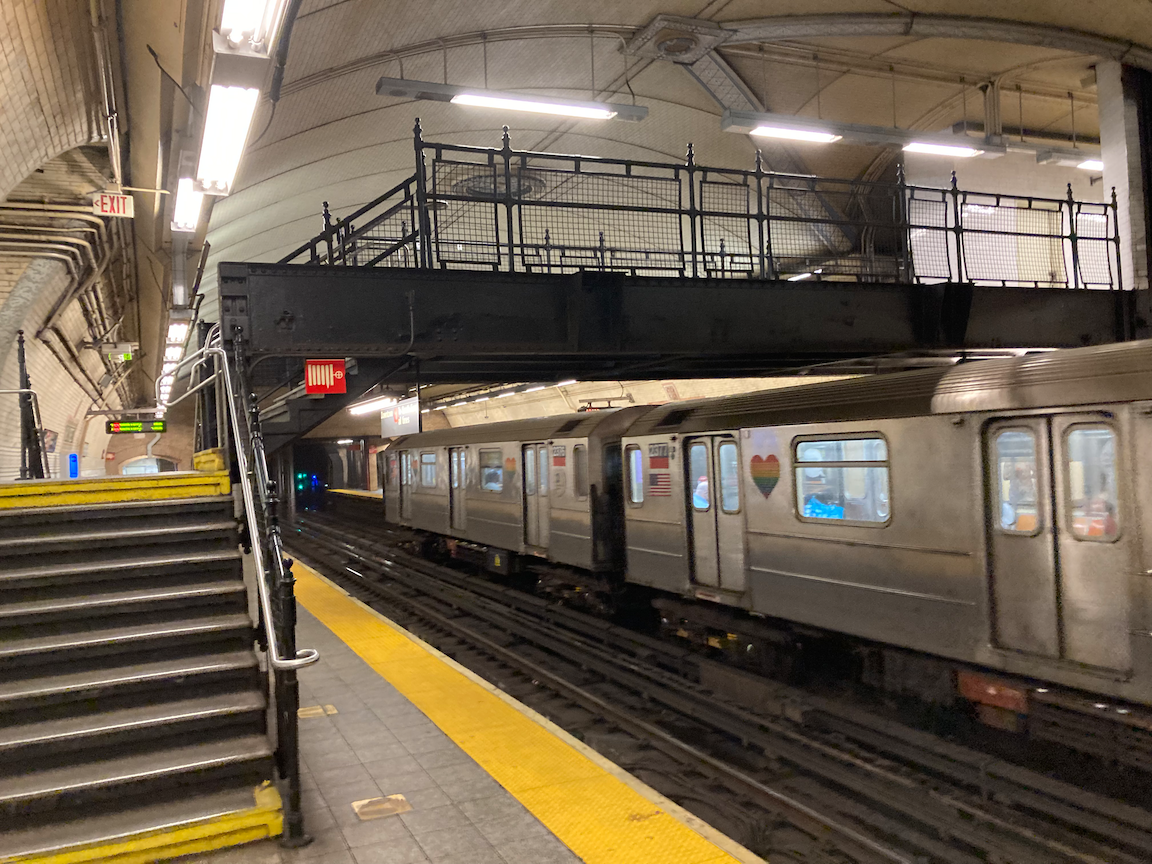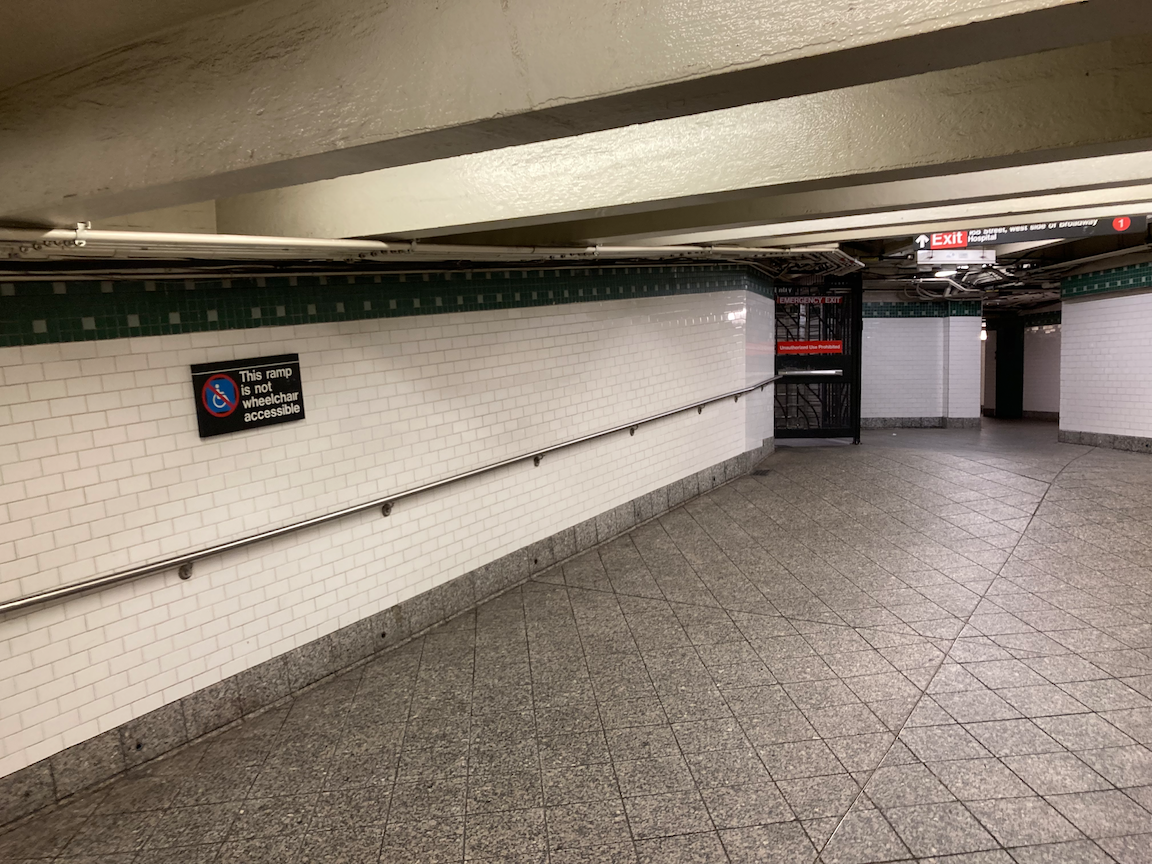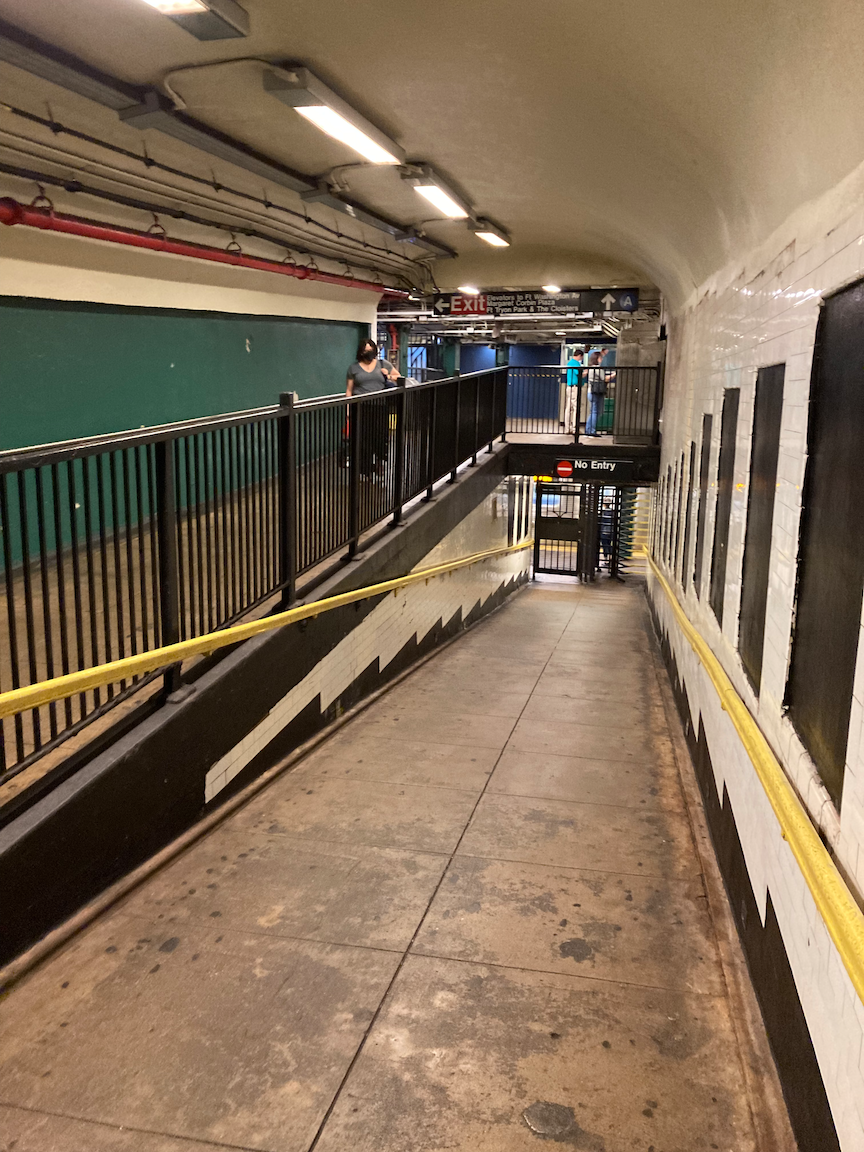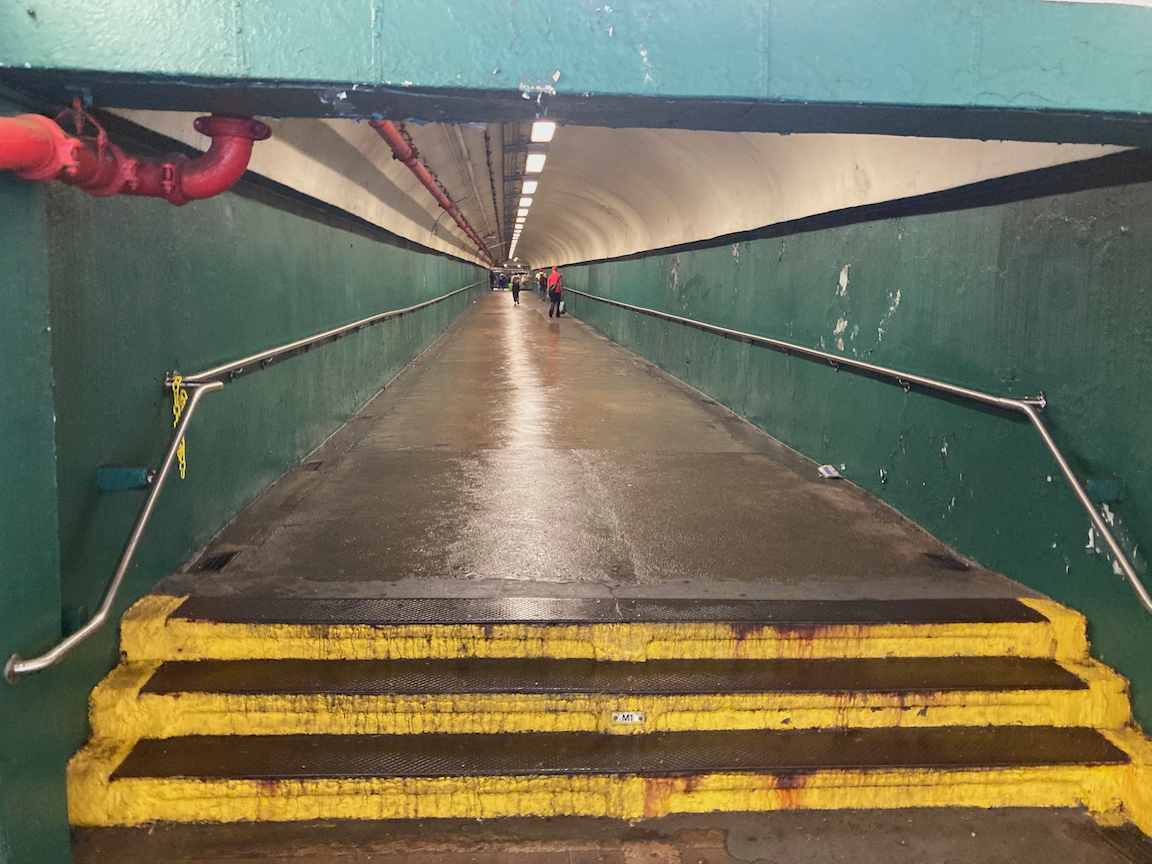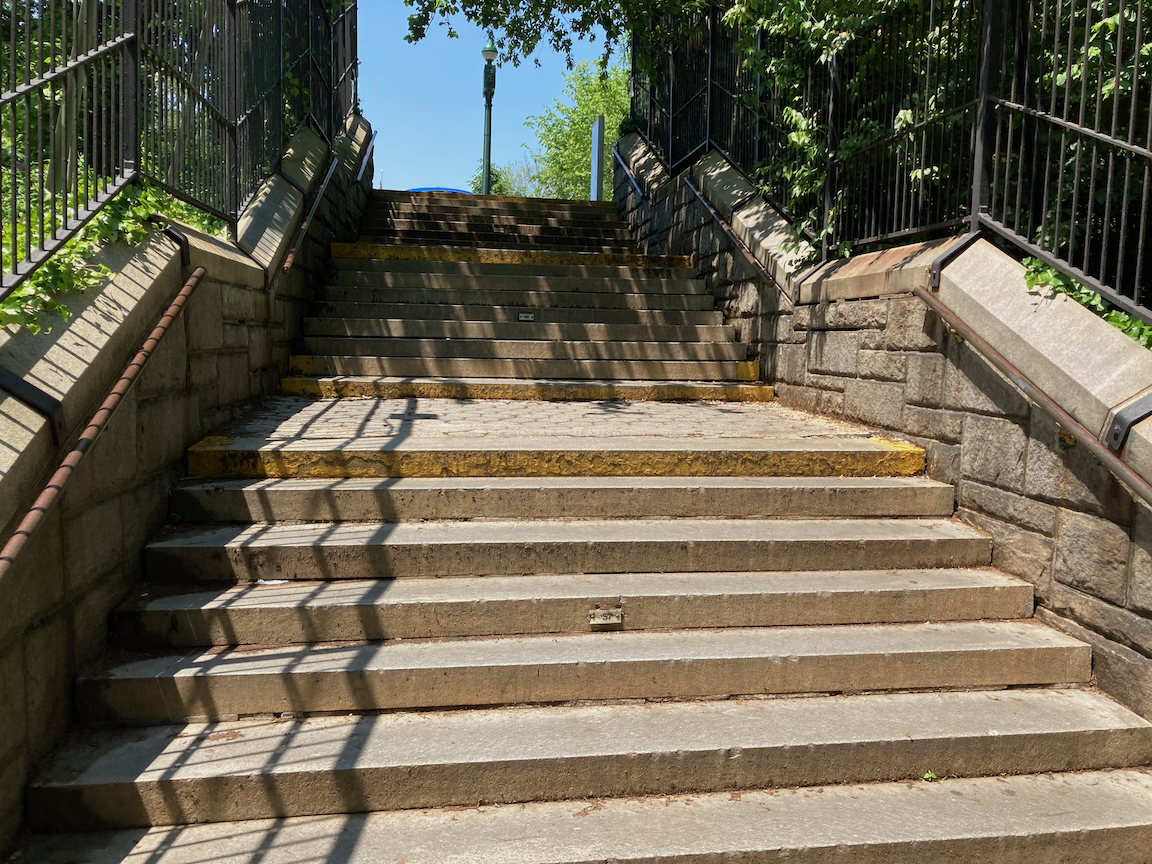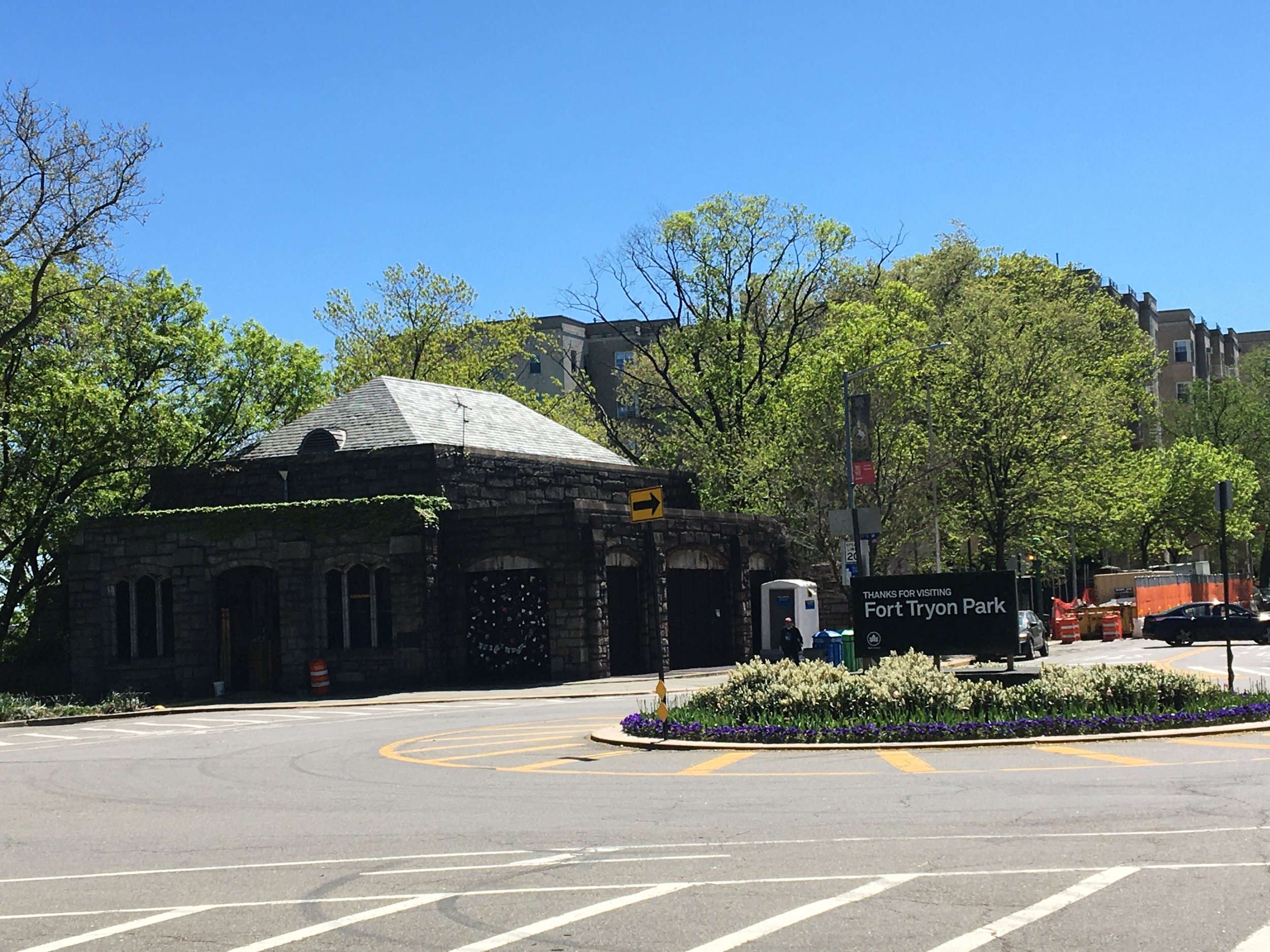Missed Opportunities, Accessibility Conundrums
WHERE: 181 Street subway station (1 train, partially accessible), 168 Street subway station (1 train, not accessible), 190 Street subway station (A train, not accessible), Manhattan
Photographs by Michael Cairl.
These three stations are in hilly upper Manhattan and are among the deepest in the subway system. The first two opened in 1906 and were accessible only by elevators from the street. 181 Street station remains so. 168 Street was connected to the 8th Avenue subway (A and C trains) after that station (and 190 Street) opened in 1932. All three stations had their elevators replaced recently, and both 168 Street and 181 Street were extensively rehabilitated following water damage at 181 Street. The centerpiece of both these stations is a large barrel vault 50 feet (15 meters) wide. That sounds like a lot and it is, but the two track ways take up exactly half that space, resulting in platforms about 12 feet wide. That doesn’t leave a lot of room to do things.
At both stations two sturdy iron bridges for pedestrian access cross the tracks. At 181 Street, one is closed to the public. Both heave several stairs leading down from the bridge to a landing, then stairs to the left and right down to the platform. The first two images are typical of both stations.
When 181 Street station was rehabilitated and the elevators replaced, access to the elevators was provided at the level of the northbound (uptown) platform and to the bridge, as shown in the next two images. At street level the station entrance is wheelchair accessible but with some minor alteration, namely installing an auto-gate in front of the station booth, accessibility could be improved a lot.
But what can be done about wheelchair accessibility for the southbound (downtown) platform? The need for stairs on the bridge is dictated by the curved tunnel wall. Cutting away some of the tunnel wall would allow for a level bridge but would necessitate new stairs. An alternative that occurred to me would to build a structure from the bridge, angling away from it toward the downtown platform, with a lift (not an elevator in a shaft) to the platform. This would upset the aesthetics of a splendid old station that is on the National Register of Historic Places, but might be the only way to make it wheelchair accessible without massive cost and expense.
168 Street has accessibility issues in both the 1 train station and the passageway to the accessible A/C trains station. Space could be made for a chair lift from the northbound platform to the more northerly of the two pedestrian bridges. See the highlighted area in the first image below. The stairs on the other end of the bridge (second lift) might require a stair lift on the bridge and would require replacing one stairway to the southbound platform with a lift. The solution is not the same as for 181 Street because the elevators to the street are on opposite sides of the tunnel.
The passageway between the two parts of the 168 Street complex does not comply with the ADA as the ramp is too steeply sloped. Signs on the walls say as much. This might be remedied by cutting away part of the ramp to accommodate a lift. This is a busy transfer point and an engineering study of pedestrian movement through the passageway would be worthwhile. An alternative might be to enlarge the passageway to accommodate a lift or an ADA-compliant ramp. If accessibility were to be addressed at the original (1 train) station, it must be addressed in the passageway as well, to make the whole station complex wheelchair-accessible. A major hospital campus, New York Presbyterian, is located at this station, so while a complete accessibility project would be expensive it should be a priority.
The 190 Street station presents a different set of accessibility challenges and opportunities. There are two entrances to the station: through a tunnel from Bennett Avenue, and by a bank of elevators from the station mezzanine to the station house on Fort Washington Avenue.
The ramp from the northbound platform to the pedestrian tunnel is too steep to be ADA-compliant, the pedestrian tunnel itself might be too steep, and there are three steps near the pedestrian tunnel entrance.
Could this be remedied? Yes, by rebuilding the pedestrian tunnel; this might entail new stairs and a lift to the mezzanine at the far end of both images above.
The mezzanine, where the fare control and elevators are, is reached by a pair of stairways from either platform. One stairway from each platform could be replaced by a lift. A better solution might be to enlarge the mezzanine to accommodate a pair of lifts without removing stairs. This would allow wheelchair users to be nearer the center of the train, where the conductor’s position is. The station walls are not curved at platform level, so this would be easier to accomplish than at 168 Street and 181 Street.
The elevators go from the mezzanine to a station house whose entrance is to a pleasant plaza 25 steps down (second image below) from Fort Washington Avenue. A small park is adjacent to this plaza. Perhaps a ramp could be constructed around the rear of the station house to street level (third image below). This seems the easiest part of the accessibility puzzle at this station to solve.
Making old subway stations accessible is rarely easy, and very little in New York City comes cheap. All this said, I cannot help thinking that while these stations were fully or partially closed for the replacement of their elevators, the MTA should have seized the opportunity to make them wheelchair-accessible. With a bit of out-of-the-box thinking, the 181 Street station might have been the easiest of the three. It is unlikely to happen in the near future, as the nearby 181 Street station (A train) is slated to be made wheelchair-accessible, and given the layout of the station this should be a comparatively easy job. Elevators are already in place from the mezzanine to Fort Washington Avenue at the north end of the station. For the same reason, the 190 Street station is unlikely to get an accessibility upgrade anytime soon. The 1 train station at 168 Street and the passageway connecting the two parts of the 168 Street complex need to be made fully accessible. People will argue that the money likely to be spent here could be spent on multiple accessibility projects. They would not be wrong, but this shouldn’t be seen as a zero-sum game. And the next time the MTA undertakes a project similar to what it did at these three stations, it should look hard at what else is to be done for full accessibility, and do it.
